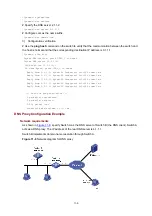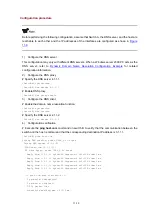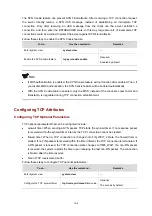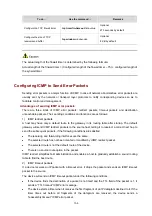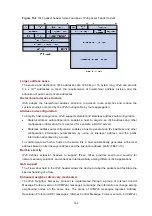
13-3
[SwitchA-Vlan-interface2] ip address 2.2.2.2 24
z
Configure Switch B
# Enable Switch B to receive directed broadcasts.
<SwitchB> system-view
[SwitchB] ip forward-broadcast
# Configure a static route to the host.
[SwitchB] ip route-static 1.1.1.1 24 2.2.2.2
# Configure an IP address for VLAN-interface 2.
[SwitchB] interface vlan-interface 2
[SwitchB-Vlan-interface2] ip address 2.2.2.1 24
After the above configurations, if you ping the subnet broadcast address (2.2.2.255) of VLAN-interface
2 of Switch A on the host, the ping packets can be received by VLAN-interface 2 of Switch B.
Configuring Cut-Through Forwarding
A cut-through forwarding-enabled device forwards a frame after it receives the first 64 bytes of the
frame, thus enhancing forwarding performance.
Follow these steps to configure cut-through forwarding:
To do…
Use the command…
Remarks
Enter system view
system-view
—
Enable cut-through forwarding
cut-through enable
Required
Disabled by default.
Currently, the S5820X series support only this feature.
Enabling the SYN Cookie Feature
As a general rule, the establishment of a TCP connection involves the following three handshakes:
1) The request originator sends a SYN message to the target server.
2) After receiving the SYN message, the target server establishes a TCP connection in the
SYN_RECEIVED state, returns a SYN ACK message to the originator, and waits for a response.
3) After receiving the SYN ACK message, the originator returns an ACK message. Thus, the TCP
connection is established.
Attackers may mount SYN Flood attacks during TCP connection establishment. They send a large
number of SYN messages to the server to establish TCP connections, but they never make any
response to SYN ACK messages. As a result, a large amount of incomplete TCP connections are
established, resulting in heavy resource consumption and making the server unable to handle
services normally.


